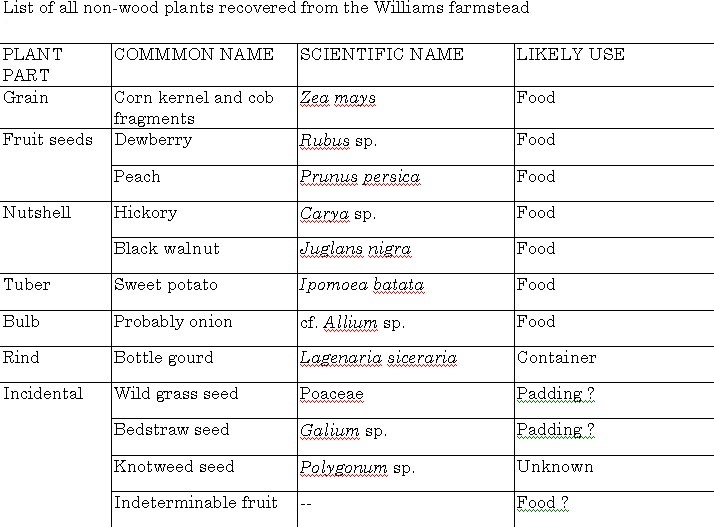
This summary table lists the botanical samples that are interpreted as the remains of food plants. These include charred fragments of black walnut and hickory nutshell, dewberry seeds, corn cobs and kernals, peach pits, and a sweet potato tuber fragment. The walnut, hickory, and dewberry are wild plants, while the corn, peaches, sweet potatoes are domestic crops. The peach pits are variable in terms of preservation, with some pits being completely charred, some being partially burned, and others being unburned. The peach pits could represent fruit bought from outside the farm, or they might have come from peach trees planted on the farm. If the Williamses had a peach tree or a small orchard, it is unlikely that the trees would have survived until the present due to their fickle nature. The sweet potato is represented by a single tuber fragment, but it was only found because one piece got accidentally burned. It is likely sweet potato is seriously underrepresented in the archeological record relative to it actual use on the farmstead. Like the animal bones, the plant remains indicate that the Williamses consumed a wide range of wild plant foods and domestic crops. Based on the plant evidence, it may be surmised that corn, sweet potatoes, and peaches were especially important foods on the Williams farm.